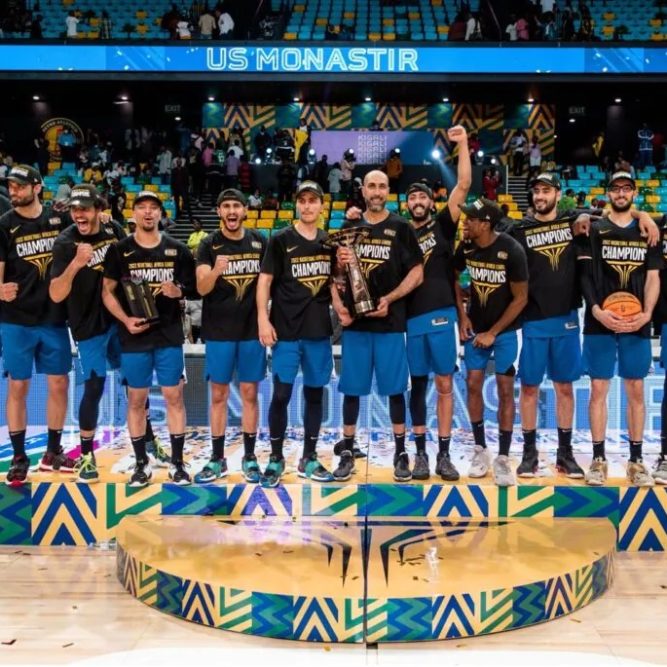
The Basketball Africa League (BAL) has done a great job of shining the sport’s spotlight on club basketball on the continent but Emmet Ryan has an idea entirely focused on development to build out the brand
The BAL has done something which no other effort at hoops on the continent has ever managed before, it’s got people talking about African club basketball outside of Africa. That’s great, it’s a core part of the goals, but another is development and the league has shown promise on that front as well. So, what if we went a bit wild with this?
The current format of the BAL only enables 12 teams from the same number of nations to compete. That’s a good start but there’s a competitive imbalance that is a struggle to address but there are ways to generate more interest amongst the currently weaker nations on the continent.
There’s also a strong motivation to do it. Take Tanzania for example. It’s a country of over 60 million people but has only one appearance at Afrobasket to its name, back in 1974. With a GDP per capita greater than five of the countries with BAL sides (Guinea, Mali, Mozambique, Rwanda, and Uganda) for those wondering, economics isn’t the barrier. It’s a lack of support for basketball culture.
Getting more nations in a continent caring about a sport, especially those with substantial populations, is always a good thing. We see this most blatantly in Europe with how coveted the UK is by those involved in the game on the continent.
No two countries are the same, let alone two continents, so any approach to developing interest in the game needs to look at what is the most viable for maintaining support.
BallinEurope is ramping up its YouTube game this season. Subscribe to our channel now for player exclusives, analysis videos, and much more.
Option A – All about strength
The last Afrobasket qualification cycle had a rather wonderfully divisible 36 teams participate. This would, in theory, enable two more 12 team leagues beneath the BAL to be formed, following its two conference approach in each and also providing an option for promotion or relegation. Good branding would sell these well, just don’t use numbers (BAL 2 has a dire ring to it). For the sake of argument let’s call the second tier the BAL Conference and the third the BAL Challenge.
The upside here is that the 12 participant clubs would be largely playing sides of comparable strength, having qualified as champions of their nation, and be able to sell a story of them being a competitive force at a continent wide level. These are straightforward stories to tell in sport and, as we’ve long learned across sports, clear and simple tales sell the easiest.
The key goal of this thought experiment is to find a way to offer more ways for more clubs to develop in more places.
Option B – Heavily regionalised
The issue with BAL Conference and BAL Challenge is that they’d be awfully expensive for the clubs involved and would, naturally, require substantial subsidies to run. It’s also basically waving goodbye to the 18 member nations that didn’t enter the AfroBasket qualifiers.
FIBA Africa however has already got a built-in solution with its zones to enable more regionalised competition. Zone 1, for example, covers Algeria, Libya, Morocco, and Tunisia, whole Zone 7 covers the Indian Ocean nations such as Comoros, Mauritius, Mozambique, and Seychelles.
The BAL Zonal Leagues would be a natural second tier in terms of layout, with all competitions being regionally focused. Some of the strength disparity would be addressed by excluding those in the actual BAL and there are natural geographic pairings if the number of games in a single zone are too few so as to ensure a large enough competition. It shines a regional spotlight and again gives some form of goal to rally support around.
Option C – Zonal into levels
The fully zonal approach helps keep costs down but, oh my, it really has the level of competition all over the place which doesn’t aid anyone long-term. So what if there was a third way?
This is pretty simple, beginning with straight and simple zonal competitions which enable substantial cost cutting at the start to work as seeding tournaments for the reduced format BAL Conference and BAL Challenge. Getting to 12 from each or 8 from each (the latter being to heavily reduce costs) based on zonal finishing position can be done with little work and single or dual location finals tournaments could subsequently be run off at the home of one of the qualifiers.
All three of these idea require investment, naturally, and subsidies as well in order to get going but the potential to tell positive basketball stories to a wider audience is obvious. The BAL is about shining a light on African hoops, that approach in its ultimate vision should be for all hoops in Africa.
BallinEurope has a book, a real life actual book called I Like it Loud, and you can buy it on Amazon now. It’s here as a book and here in Kindle form.




Leave a Reply